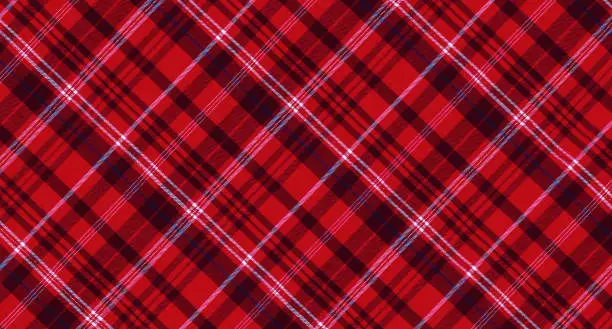How MacDuff Tartan Enhances Traditional Scottish Style MacDuff Tartan stands as a timeless symbol of Scottish heritage, weaving together centuries of tradition with contemporary elegance. As one of Scotland’s most storied tartans, it carries with it the legacy of Clan MacDuff—a clan deeply rooted in Scottish history and known for its significant contributions to the nation’s cultural and political landscape. This tartan, with its distinctive pattern and rich colors, is not merely a fabric but a vibrant piece of Scottish identity that continues to captivate and inspire. In this article, we explore how MacDuff Tartan enhances traditional Scottish style, examining its historical significance, design elements, and its enduring role in modern fashion and cultural celebrations. From its origins in the ancient highlands to its place in today’s fashion scene, MacDuff Tartan represents a bridge between the past and the present, embodying the spirit of Scotland in every thread.
The Legacy of Clan MacDuff
Clan MacDuff, an influential Scottish clan, has roots that stretch back to the early medieval period. Originating in the region of Fife, the clan played a pivotal role in Scottish history, particularly in the realms of politics and military affairs. The MacDuff family was known for their position as hereditary constables of Scotland, a title that granted them significant authority and responsibility. The clan’s influence extended beyond politics; they were integral to the development of Scottish culture and traditions. The MacDuff tartan symbolizes this rich heritage. Historically, the tartan was worn by clan members as a sign of unity and identity. Its patterns and colors were not merely aesthetic choices but were imbued with meaning and history, reflecting the clan’s values and social status. By wearing the MacDuff tartan today, individuals honor the clan’s legacy and continue a tradition that has been celebrated for centuries. The heraldic symbols associated with Clan MacDuff provide further context to the tartan’s significance. The clan’s coat of arms features a lion and a cross, which are emblematic of their historic role as defenders of Scotland. The tartan often incorporates colors and patterns that align with these symbols, creating a visual representation of the clan’s heritage.
Design Elements of MacDuff Tartan
Traditional Colors and Patterns
The MacDuff tartan is known for its distinctive color palette and pattern. Traditionally, the tartan features a blend of deep greens, rich blues, and earthy browns. These colors are carefully chosen to reflect the natural beauty of the Scottish landscape and the clan’s connection to their land. The pattern of the tartan, characterized by its balanced arrangement of stripes, creates a harmonious visual effect that is both striking and elegant. The traditional MacDuff tartan design includes a series of intersecting lines that form a grid-like pattern. This pattern is not just a stylistic choice but also serves a practical purpose. The grid structure of the tartan allows it to be easily recognized and distinguished from other tartans, making it a prominent feature in Scottish dress. The careful arrangement of colors and patterns in the MacDuff tartan reflects the skill and artistry of Scottish weavers, who have maintained this tradition for generations. In addition to the traditional design, modern variations of the MacDuff tartan have emerged to cater to contemporary fashion trends. These variations often feature updated color schemes and patterns, reflecting current styles while maintaining a connection to the traditional design. For example, modern interpretations of the MacDuff tartan may include brighter or more subdued colors, depending on current fashion trends.
Incorporating MacDuff Tartan into Traditional Attire
The MacDuff tartan is most famously worn in the form of a kilt, a traditional Scottish garment that has become a symbol of Scottish identity. The kilt made from MacDuff tartan is a statement piece that showcases the wearer’s connection to Scottish heritage. The tartan’s rich colors and intricate pattern make it a striking choice for formal occasions and celebrations. MacDuff tartan is also featured in a variety of accessories that add a touch of Scottish heritage to everyday wear. Items such as scarves, ties, and pocket squares made from MacDuff tartan allow individuals to incorporate the tartan into their wardrobe in a subtle yet fashionable way. These accessories provide an opportunity to enjoy the beauty of the MacDuff tartan without committing to full traditional attire. For instance, a MacDuff tartan scarf can be worn with both casual and formal outfits, adding a hint of Scottish flair to any look. Similarly, a tie or pocket square in MacDuff tartan can enhance a business suit or formal dress, offering a refined and stylish touch. These accessories make the MacDuff tartan accessible to those who may not wear a kilt but still wish to celebrate their Scottish heritage through fashion. The influence of MacDuff tartan extends beyond traditional Scottish attire into the realm of modern fashion. Contemporary Scottish designers often draw inspiration from traditional tartans, including MacDuff, to create innovative and stylish garments. This fusion of traditional and modern elements results in fashion pieces that pay homage to Scottish heritage while embracing current trends. Modern Scottish fashion designers incorporate MacDuff tartan into various garments, such as tailored suits, casual jackets, and even streetwear.
The Tartan’s Role in Cultural Celebrations
The Highland Games and other cultural festivals are significant occasions where MacDuff tartan is proudly worn. These events celebrate Scottish traditions and showcase a range of cultural practices, including traditional music, dancing, and athletic competitions. The MacDuff tartan’s vibrant appearance and historical roots make it an ideal choice for participants and spectators alike. Wearing MacDuff tartan at these festivals enhances the festive atmosphere and highlights the wearer’s connection to Scottish heritage. Whether as part of a kilt or in accessory form, the tartan contributes to the overall experience of the event, allowing individuals to express their pride in Scottish culture. The presence of MacDuff tartan at these celebrations helps to maintain and promote Scottish traditions for future generations. In addition to festivals, MacDuff tartan is a popular choice for weddings and formal ceremonies. The tartan’s elegant design and historical significance make it a fitting choice for such important occasions. Whether used in kilts, bridesmaid dresses, or other elements of wedding attire, MacDuff tartan adds a touch of tradition and sophistication to the celebration. The incorporation of MacDuff tartan into wedding attire allows couples to honor their Scottish heritage while creating a memorable and distinctive look. The tartan’s versatility ensures that it can be adapted to various styles and themes, making it a popular choice for weddings and other significant events. By choosing MacDuff tartan, individuals can celebrate their cultural heritage in a meaningful and stylish way.
Sustainable Fashion and MacDuff Tartan
As sustainability becomes increasingly important in the fashion industry, the use of eco-friendly materials in MacDuff tartan garments has gained prominence. Sustainable fashion practices involve selecting materials that are environmentally friendly and produced with minimal impact on the planet. Many modern MacDuff tartan garments are made from organic or recycled fibers, aligning with these sustainable practices. Choosing MacDuff tartan made from eco-friendly materials allows consumers to support environmentally conscious fashion while still enjoying the beauty of traditional Scottish design. This commitment to sustainability not only benefits the environment but also reflects a growing awareness of the need for responsible fashion choices. The timeless appeal of MacDuff tartan contributes to its sustainability. The classic design and enduring style of the tartan ensure that it remains fashionable over time, reducing the need for frequent replacements. By investing in high-quality Mac Duff tartan garments, individuals can enjoy a long-lasting piece of Scottish heritage that continues to enhance their wardrobe for years to come. The durability of MacDuff tartan fabric also supports its sustainable credentials. Well-made garments that stand the test of time contribute to a more sustainable fashion cycle, as they do not need to be replaced frequently. This longevity makes MacDuff tartan a practical and stylish choice for those seeking to build a lasting and eco-friendly wardrobe.
MacDuff Tartan in Popular Culture
MacDuff tartan has made notable appearances in various media and entertainment platforms, reinforcing its place in Scottish cultural identity. Films, television shows, and even literature often feature tartans as symbols of Scottish heritage and tradition. The presence of MacDuff tartan in these media helps to perpetuate its significance and introduce it to new audiences. For example, historical dramas and documentaries set in Scotland frequently showcase traditional tartans, including MacDuff, as part of their visual storytelling. This exposure not only highlights the tartan’s historical importance but also contributes to its continued popularity and relevance in modern culture. Celebrities and public figures who wear MacDuff tartan further enhance its visibility and appeal. High-profile endorsements and appearances by celebrities in MacDuff tartan garments contribute to the tartan’s fashionability and desirability. Their influence helps to popularize the tartan and demonstrates its versatility and stylishness in contemporary settings. Celebrity endorsements often include appearances at events, red carpet appearances, and even social media posts featuring MacDuff tartan. These endorsements not only showcase the tartan’s aesthetic appeal but also reinforce its status as a prominent element of Scottish fashion.
The Timeless Appeal of Scottish Kilts
Scottish Kilts are more than just garments; they are emblematic of Scotland’s rich cultural heritage and enduring traditions. Worn for centuries by Scottish men, these iconic pieces of attire have transcended their original purpose as functional clothing, evolving into symbols of national pride and identity. Scottish Kilts are typically made from woolen tartan fabric, each pattern representing a specific clan or region, thereby connecting the wearer to their ancestral roots. Today, Scottish Kilts are worn not only during traditional events and ceremonies but have also found a place in contemporary fashion, showcasing the versatility and timeless appeal of this quintessentially Scottish garment. Whether donned at weddings, Highland games, or casual gatherings, Scottish Kilts continue to captivate and inspire, reflecting the rich history and vibrant culture of Scotland.
How to Choose the Right MacDuff Tartan Piece
Authenticity and Quality
When selecting MacDuff tartan garments or accessories, it is essential to ensure authenticity and quality. Authentic MacDuff tartan is produced according to traditional patterns and colors, reflecting the true heritage of the clan. To guarantee authenticity, purchase from reputable suppliers and verify the tartan’s origin. Quality is also a key factor in choosing MacDuff tartan items. High-quality fabrics and craftsmanship ensure that the tartan garment or accessory will maintain its appearance and durability over time. Investing in well-made pieces not only enhances your style but also supports the preservation of traditional Scottish craftsmanship. Choosing the right MacDuff tartan piece involves considering your personal style and how the item will fit into your wardrobe. Whether you are looking for a traditional kilt, a contemporary accessory, or something in between, select items that align with your individual preferences and needs. For instance, if you prefer a classic look, a MacDuff tartan kilt may be the perfect choice. If you are looking for something more versatile, consider incorporating MacDuff tartan accessories into your outfits. The key is to choose items that complement your style and enhance your overall appearance.
Caring for MacDuff Tartan Garments
Proper care is essential for maintaining the appearance and longevity of MacDuff tartan garments. Follow the care instructions provided with the garment, which typically include recommendations for washing, drying, and ironing. Regular cleaning and maintenance will help preserve the tartan’s colors and fabric, ensuring that it continues to look its best. For woolen tartan garments, hand washing or dry cleaning is often recommended to prevent damage. Use mild detergents and avoid harsh chemicals that can affect the fabric’s quality. Proper storage is also important; store tartan items in a cool, dry place away from direct sunlight to prevent fading and deterioration. When not in use, MacDuff tartan garments should be stored properly to maintain their condition. Avoid folding or crumpling the fabric, as this can cause creases and distortions. Instead, hang garments on padded hangers or store them in breathable garment bags. For kilts and other tartan items, ensure that they are stored in a way that allows them to maintain their shape and structure. Proper storage techniques will help extend the lifespan of your MacDuff tartan garments and ensure that they remain in excellent condition for years to come.
Conclusion
MacDuff tartan embodies a blend of tradition, elegance, and modernity that enhances Scottish style in a variety of contexts. Its historical significance, coupled with its stylish design, makes it a versatile and enduring choice for those seeking to celebrate Scottish heritage. Whether worn as part of traditional attire or incorporated into contemporary fashion, MacDuff tartan continues to captivate and inspire. By understanding the historical roots, design elements, and modern applications of MacDuff tartan, individuals can fully appreciate its role in Scottish fashion. The tartan’s timeless appeal ensures that it remains a cherished and influential element of Scottish style, bridging the gap between tradition and contemporary fashion.











